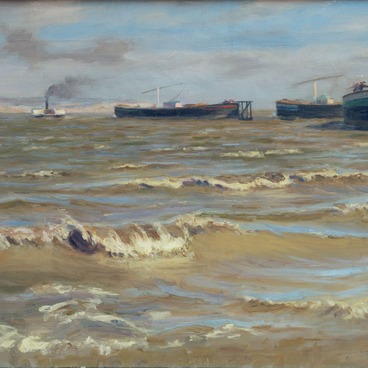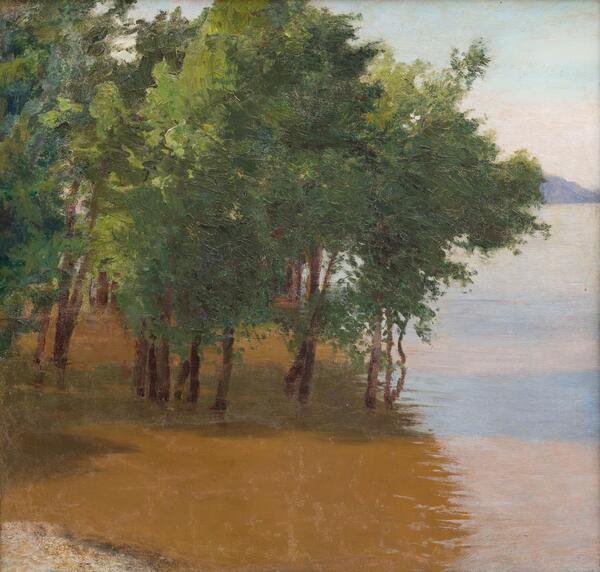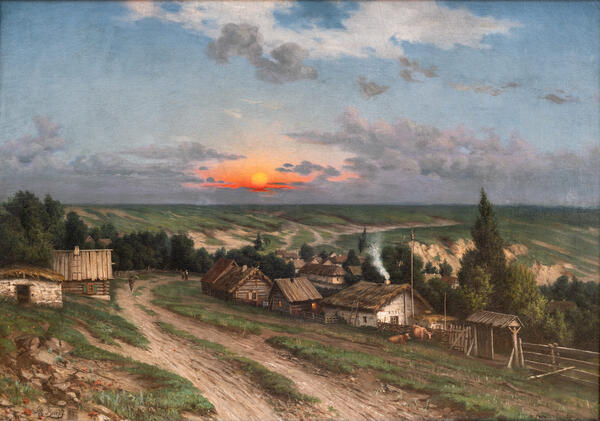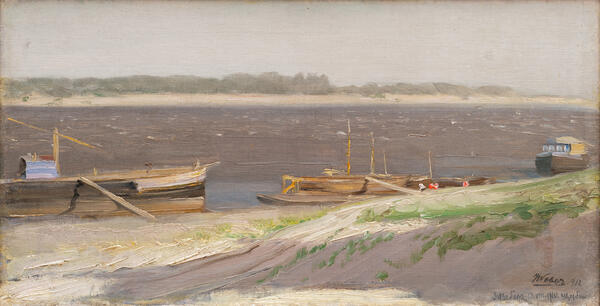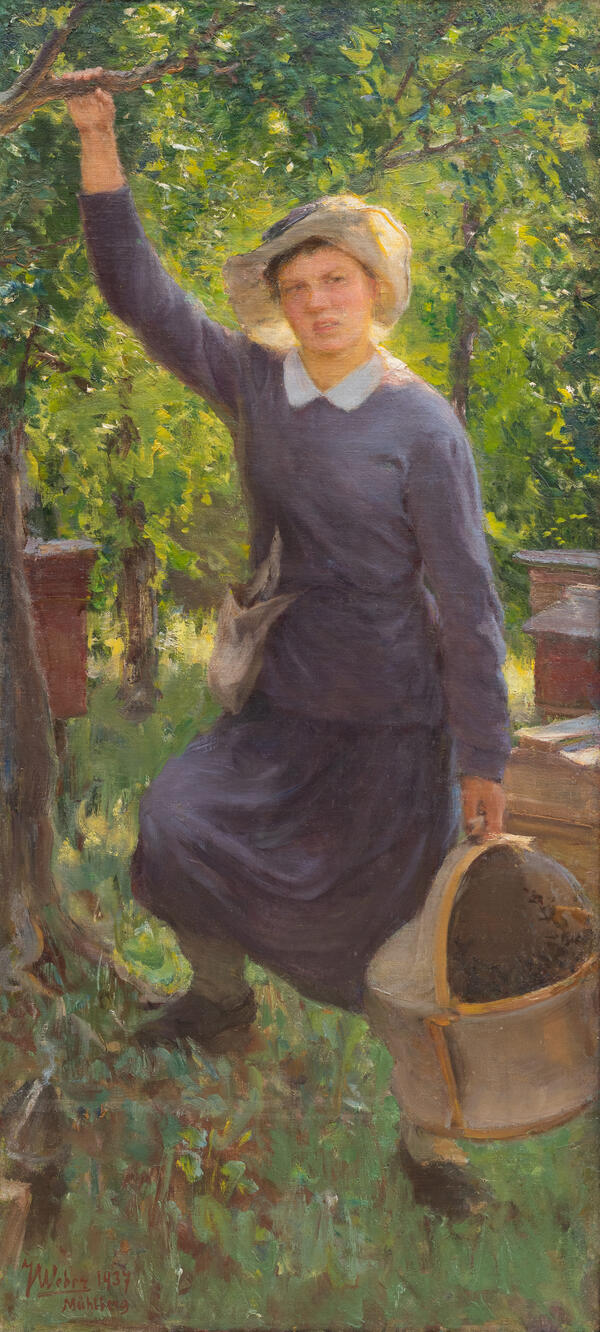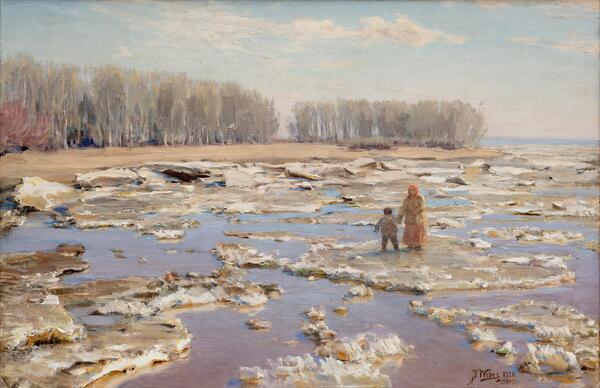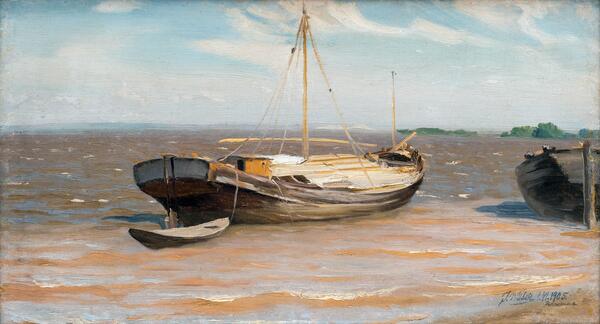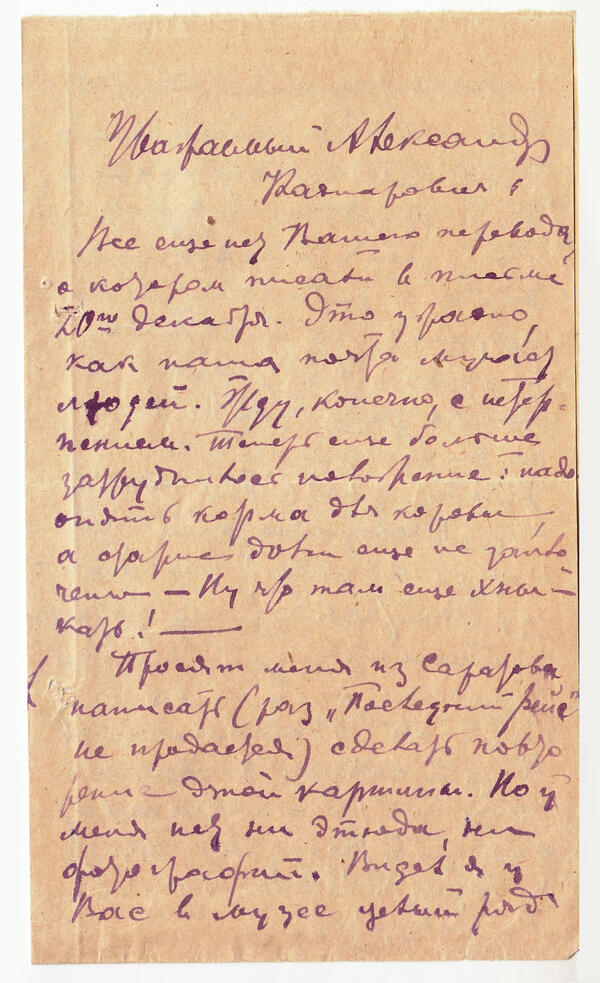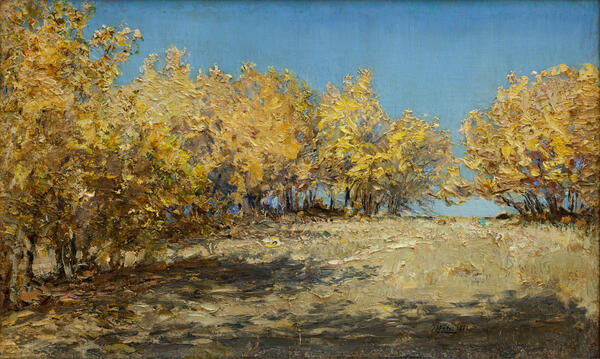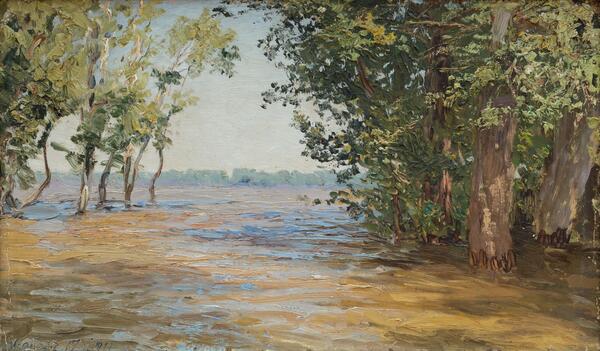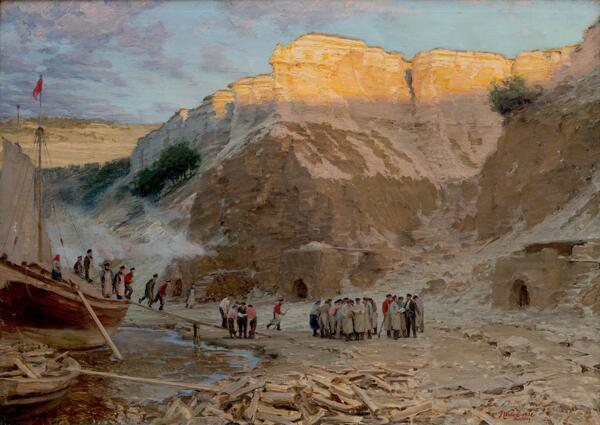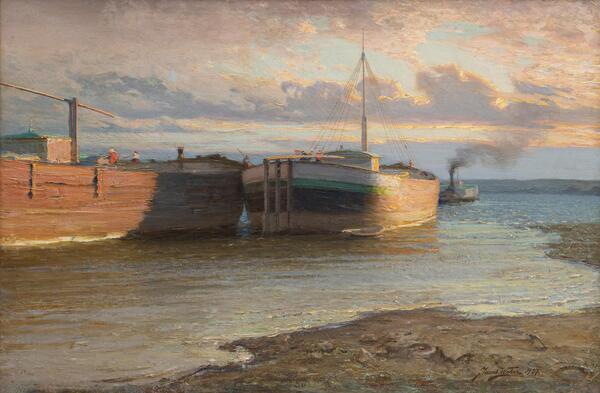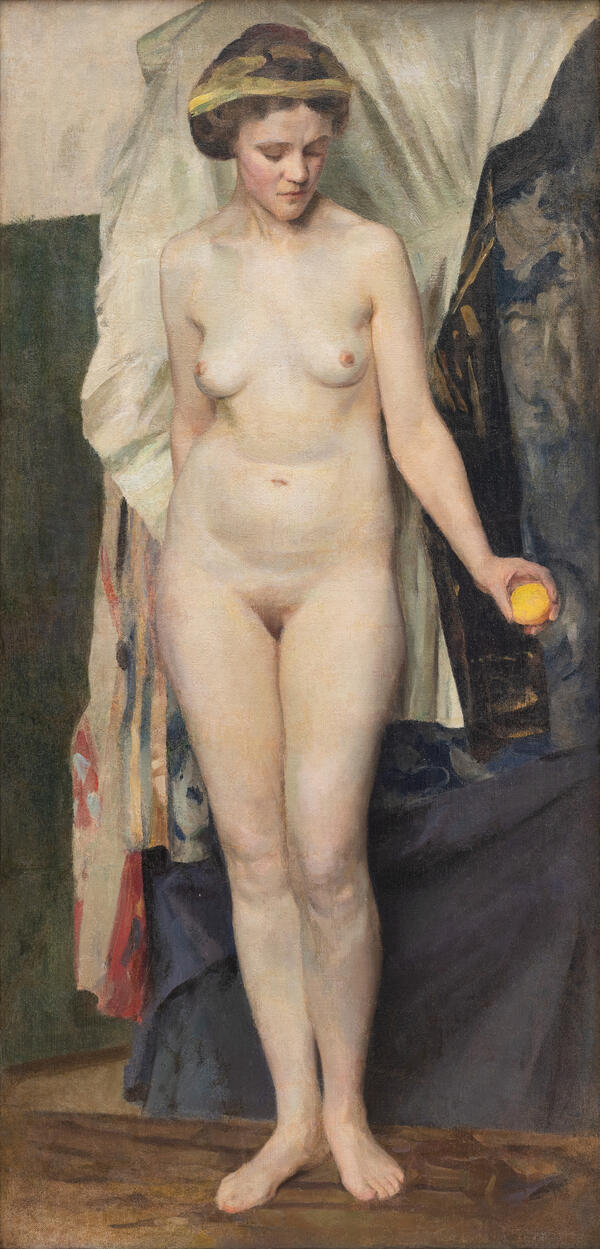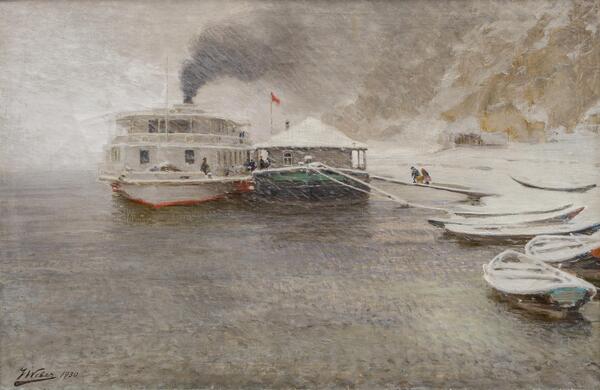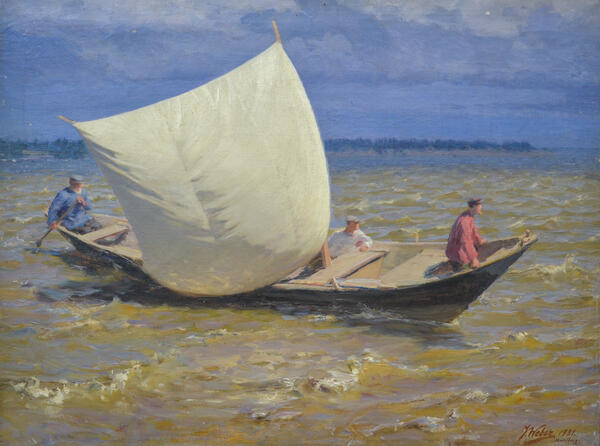The exhibition of the Engels Museum of Local Lore presents one of the early student works of Yakov Yakovlevich Weber “Monk by the Fire”, which dates back to the artist’s Penza period.
The young artist Yakov Weber, after failing to enter the Moscow School of Painting, Sculpture and Architecture, in 1898, decided to study at the newly opened Penza Art School named after Nikolay Seliverstov. The director of the school, Konstantin Apollonovich Savitsky, a Peredvizhniki artist and professor of landscape painting, later became a teacher of Weber. Konstantin Savitsky headed the school until his death on January 31 (February 13), 1905.
At the school, a lot of painting was done from
life, for which the sitters were invited. This was the case with the portrait
of a monk by the fire. On the vertical canvas is a pensive figure of a monk in
black vestments and headdress, sitting by the fire against the background of a
red brick wall in a three-quarter turn. The work was executed in the traditions of
realistic Peredvizhniki portraiture. It was not finished, some details were not
painted, but the figure was correctly fitted to the size of the canvas, and the
proportions of the body were accurately calibrated. Weber tried to convey the
overtones and light reflected from the fire on the face and clothes of the
figure by decomposing the red and black colors into tones. The detailed nature
of his earlier works was no longer a feature of this work. The artist develops
the ability to generalize, to use tone and color in the interpretation of the
form. Weber’s early works are characterized by an appeal to the traditions of
portrait and landscape painting of the Peredvizhniki artists, namely Konstantin
Savitsky, Weber’s teacher. Savitsky deliberately promoted the realistic method
in art, that is why in the educational practice of the school a lot of
attention was paid to the work in the open air, and the main priority was given
to painting. Savitsky developed his own study program, which proved itself so
successful that the best graduates of the school were admitted without
examinations to the Imperial Academy of Arts. Weber developed a good friendship
with Savitsky, and he recalled his life and studies in Penza in great detail
and with great warmth.

